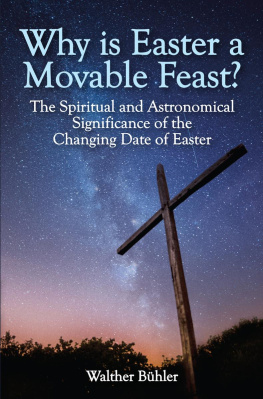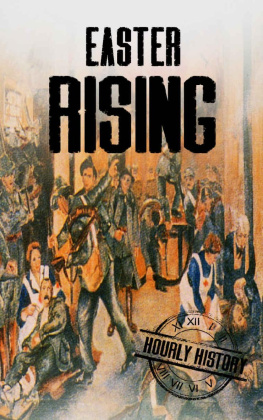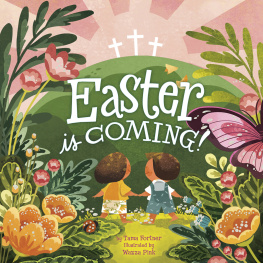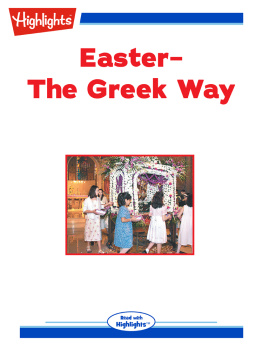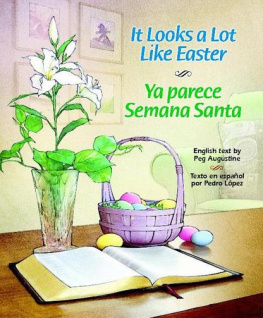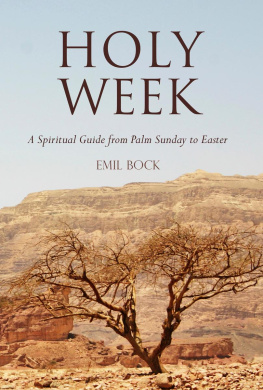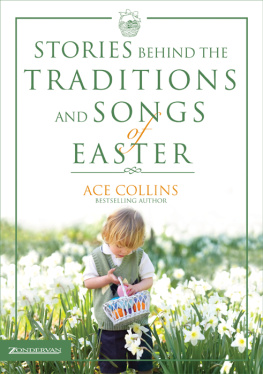The date of Easter is determined by the Full Moon following the spring equinox. The Sunday following this is Easter Sunday. This means that the date of Easter (and the Christian festivals related to Easter, like Palm Sunday, Ascension and Pentecost) can vary by 35 days. From a mundane and practical point of view this creates difficulties, for instance because it causes the dates of academic terms and school holidays to vary each year.
In 2015 Pope Francis indicated that the Roman Catholic Church had come to an agreement for a common fixed date of Easter with the Orthodox and Coptic churches, and in 2016 Justin Welby, Archbishop of Canterbury announced that the Anglican Communion had joined discussions. Welby even suggested that the date of Easter would become fixed within the next five to ten years.
Since the days of the early Christian church there have been controversies and disputes about the calculation of the correct date of Easter, leading to schisms in the church most notably between the western churches using the Gregorian calendar, which keeps the spring equinox close to March 21, and the eastern orthodox churches using the Julian calendar, which is now 13 days behind.
Since the 1920s there have been various proposals to determine the date of Easter. Some tried to find common ground between the western and eastern churches; others attempted to fix the date of Easter to a certain Sunday in the first half of April to avoid the date varying so considerably from year to year. Some even went so far as to want a complete calendar reform to permanently fix the dates to the days of the week, which would involve missing one day-of-the week every year (and two in a leap year).
Walther Bhler not only gives a detailed history of how this method was eventually arrived at but, much more importantly, shows the purpose and underlying meaning behind this method. If Easter is more than merely a historical remembrance of the date of the resurrection of Christ, it is important to understand the connection between the Christian festival and the cosmic relationships of Sun, Moon and Earth.
Many priests of The Christian Community feel that retaining the moveable date of Easter and an understanding of its cosmic aspects are important. Fixing the festival to a particular day would be to ignore the rhythm and meaning of the planetary spheres and their subtle influence on life on the earth.
This book is therefore very welcome as part of this important, ongoing discussion.
Peter van Breda
Priest of The Christian Community, London
The world of space has an element of exclusiveness. The space occupied by one solid body cannot contain another. Everything and everyone makes a territorial claim. How many disputes and wars have been caused by tribes and peoples competing for territory? We all like to decide the place where we live and work freely for ourselves.
How different it is with time. All beings are carried along equally in its powerful and inexorable flow. The same time span contains people and creatures at the most various stages of development. Spring, summer, autumn and winter take place simultaneously over the continents of a hemisphere. The diurnal alternation of night and day extend in equal measure to all people throughout the globe. The rhythms of time have the particular quality that they bridge oceans and continents, the depths and the heights, and cross all geographical and artificial boundaries. Through them we share in a truly universal element.
But human beings seek to find their own position, not only in space but also in time. Calendars represent an ordering of time which governs and permeates life in a particular way. The division of time into hours and days reflects how peoples of different ages have regarded human nature and its place in a cosmic setting. Landmarks in the development of human consciousness are visible in various forms of calendars.
The basic components of every calendar are the rhythms of the universe the interplay of Earth and the neighbouring heavenly bodies. The day and the year reflect the relation of Sun to Earth and the month the relation of the Moon to Sun and Earth. The final component, that of the seven day week, has a different character, to which we will return in . The week does not represent the course of any planet nor any spacial relation which can be observed in the heavens.
In each case, however, we are concerned with rhythms of a particular kind and their interaction. Every attempt to change the calendar requires an incursion into the realms of rhythm, and presupposes an intimate knowledge of its true nature. The sum total of present day knowledge must be taken into consideration. Modern research shows more and more clearly that rhythm is the foundation of all life on our planet.
This fact was constantly in the minds of earlier calendar reformers. For the reform of 46 BC , Julius Caesar summoned the renowned astronomer Sosigenes of Alexandria to advise on the institution of the leap year. This was then called the Julian calendar. Earlier, Meton of Athens became famous by his discovery of the nineteen-year lunar cycle, which resulted in a radical improvement of the Greek lunar calendar. From it we know that the same phases of the Moon recur on the same calendar dates every nineteen years, as the duration of 235 revolutions of the Moon is almost exactly 19 years. To this day the Metonic cycle is used in the computation of Easter. Pope Gregory XIII also made use of all the available experts of his day in the calendar reform of October 1582, which removed ten days from that year. Our present Gregorian calendar, which omits one intercalated day (February 29) in every three centuries out of four, has its origin in that correction.
The principal difficulty in all earlier attempts to establish a sensible calendar lay in the inaccuracy of astronomical observations, and consequently the imprecise notions of the time values in question. Only in modern times have astronomers learnt to estimate the transit of the Sun through the vernal point (spring equinox), or the opposition of Sun and Moon (Full Moon), to an accuracy of under a hundredth of a second. For leap years to work correctly it is necessary to know that the duration of the solar year is not 365 days, nor as in the Julian reform 365.25 days, but 365.2422, that is, 365 days, 5 hours, 48 minutes and 46 seconds. The Gregorian assumption of 365.2425 days had thus achieved a higher degree of precision.
Now that astronomical observation has become so precise, and all conceivable astronomical data can be produced with a previously inconceivable speed, the problems of calendar reform have shifted on to a quite different level. We now have to concern ourselves with the character of the fundamental time periods and their relationship to the life of the Earth and of human beings.
In this book we will try to draw out some of the properties of rhythm. All light phenomena in our solar system follow rhythms of smaller or greater periods. In the biosphere from plant life to human beings the rhythms of all physiological functions are related to the rhythms of the cosmos. In human life an inexhaustible field of therapeutic effects are mediated by the rhythmic practice of the most various forms of religious and artistic activity and experienced most strongly in music and rhythmic movement such as dance.
The definition of rhythm as the recurrence of similar processes at regular intervals, though not wrong, is inadequate and ignores the deeper nature of rhythm. It is a living recurrence of similar processes, as opposed to the mechanical repetition of the same. Furthermore as rhythm works upon the human being, it enhances and strengthens vitality. This can be seen for example in the exhilarating effect of music upon the will in dance.

